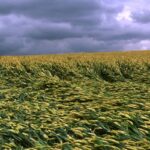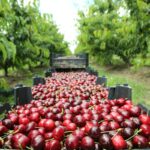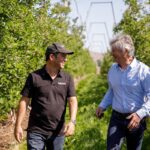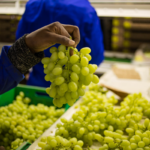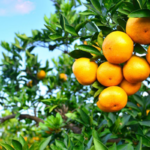Maluma yields outperform Hass in Peruvian avocado trials, claims Talsa

The Peruvian grower-exporter is pushing the envelope with orchard density and to great effect, with expectations to hit 39MT per hectare on one farm this upcoming season. 
Peru is now the world's leading producer of the South African-developed avocado variety Maluma, with 350,000 trees planted after experiencing "steep" growth in recent years.
Dr. André Ernst, who founded Allesbeste Nursery which owns the variety, told participants at last week's Maluma Day he had never seen avocado fruit set quite like what has occurred in Peru.
"It's unbelievable," he said, before introducing Daniel Arispe, production manager at a company that to date accounts for 150,000 Maluma trees planted in the Andean nation - Talsa.
Talsa's first trial of the variety was in 2013 on its Ensueño Farm in Chao, about an hour's drive south of Trujillo in a desert area that has blossomed with agricultural activity thanks to the Chavimochic irrigation project.
The trees were planted in a standing spacing of 7x3.5m. This is nowhere near as dense as some of the more recently planted orchards, but the comparative performance of Maluma and Hass under the same conditions has certainly guided Talsa's strategy ever since.
Even when excluding the "flor loca' (crazy flower) effect whereby trees will sometimes have a secondary smaller crop in addition to the main one, the 2015 harvest reached 9.6 metric tons (MT)/ha compared to just 2.5MT/ha for Hass.
As the trees got older the yields rose rapidly, with last year's harvest between April and May notching an average of 25.8MT/ha for Maluma and 14.5MT/ha for Hass.
It was in the same year of the first harvest that Talsa started its second trial with dense plantings of 6x2m, 6x2.5m and 6x3m. Two years later, in April-May 2017 these orchards produced staggering results of 20.7MT/ha for the densest plots and 15.5MT/ha for the least dense areas.
"Of course you have a little bit more kilos per plant when you have lower density but it’s much better to increase the density in the end," Arispe told attendees.
"For this year's projection, we’re going to start harvest in four or six weeks and it's unbelievable - it’s almost 39 tons in the higher density [orchards]," he said.
"We haven't ever had these results with Hass," he said, claiming this industry standard variety tended to hit maximum rates of 24-26MT/ha but never more than 30MT/ha.
Arispe pointed to another benefit of Maluma avocados in that they can be planted in warmer areas where growers sometimes struggle to get the right commercial sizing in Hass. This has already been shown as far as northern Queensland in Australia and closer to the variety's origins in the district of Mooketsi.
Talsa is making the most of this attribute with its third trial much further north in Peru in Zaña, close to Chiclayo. The first ever harvest on the property, known as the San Gustavo Farm, will be taking place in just over a month's time.
"The temperature is 2-3° celsius more, the soil is of a medium texture, it has more limestone and clay than the one before, and the water is from wells so the salinity here is a little bit higher and we had some problems there at the beginning," Arispe said.
He said the Zutano rootstock didn't behave so well on that farm so the company has switched to West Indian rootstocks to better cope with the conditions in Zaña. With 63ha of Maluma and 4ha of Hass, orchard spacing has been tight at 6x2m and 5x2m.
While much of his presentation focused on comparative yields, for Arispe the Maluma variety represents a lot more than just volume, and this is demonstrated by the fact his company will be planting 300ha of the cultivar at the end of this year and early next year, along with 200ha of Hass.
So why Maluma? The agricultural engineer highlighted the trees had better fruit set, so they didn't need the plant growth regulators that had become more commonplace in Peru to avoid sub-par fruit set or fruit drop.
"Plant growth regulators were good to improve that but in Maluma they’re not necessary," he said.
He also emphasized Maluma achieved bigger sizes along with bigger and more attractive flowers.
"That's also a thing that we notice a lot. We used some bees, some pollinators, and they always prefer the Maluma flowers," he said.
"Probably you have more nectar and also we have an earlier harvest. In Peru, bigger fruit and an earlier harvest is more profitable."

















